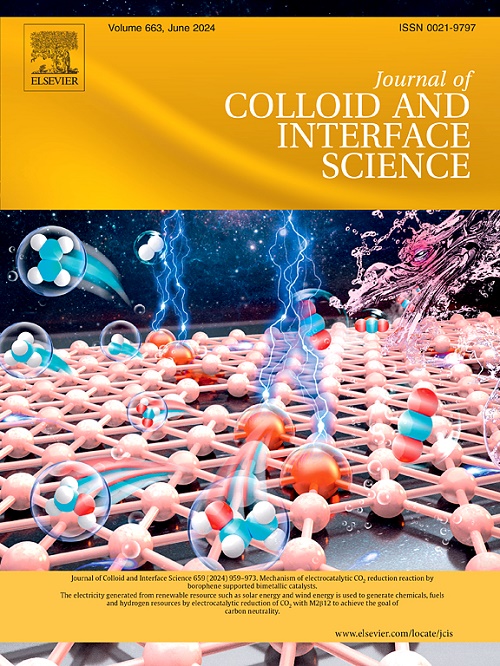From nanometric to giant polyion complex micelles via a hierarchical assembly of dendrimers
IF 9.4
1区 化学
Q1 CHEMISTRY, PHYSICAL
引用次数: 0
Abstract
Hypothesis
PIC (polyion complex) micelles prepared from oppositely charged block copolymers have typical diameters of about 30–50 nm. Attempts to control their size have proven elusive. Since the presence of a neutral hydrophilic block in the copolymers, such as poly(ethylene glycol) (PEG), allows confining the charged blocks within a core, reducing PEGylation was expected to produce larger micelles to accommodate fewer/smaller PEG chains at the corona.
Experiments
PIC micelles with variable PEGylation were prepared by tuning the ratio between a PEG-dendritic copolymer/dendrimer pair (% PEG) or the molecular weight (MW) of PEG. The size and core-corona structure of the micelles were studied by dynamic light scattering, electron and confocal microscopies. A model of core–shell spherical particles developed to describe the size variation was validated by static light scattering.
Findings
The diameter of PIC micelles can be tuned from 40 nm up to nearly 2 µm by appropriate selection of % PEG and MW of PEG (Eq. (12)). Reducing % PEG produces larger micelles and concomitant reductions in the number and total surface area of particles and PEG density. While smaller PEGs are more effective at templating larger and more densely PEGylated micelles, longer PEG chains fit better into smaller micelles with lower PEG density.

求助全文
约1分钟内获得全文
求助全文
来源期刊
CiteScore
16.10
自引率
7.10%
发文量
2568
审稿时长
2 months
期刊介绍:
The Journal of Colloid and Interface Science publishes original research findings on the fundamental principles of colloid and interface science, as well as innovative applications in various fields. The criteria for publication include impact, quality, novelty, and originality.
Emphasis:
The journal emphasizes fundamental scientific innovation within the following categories:
A.Colloidal Materials and Nanomaterials
B.Soft Colloidal and Self-Assembly Systems
C.Adsorption, Catalysis, and Electrochemistry
D.Interfacial Processes, Capillarity, and Wetting
E.Biomaterials and Nanomedicine
F.Energy Conversion and Storage, and Environmental Technologies

 求助内容:
求助内容: 应助结果提醒方式:
应助结果提醒方式:


